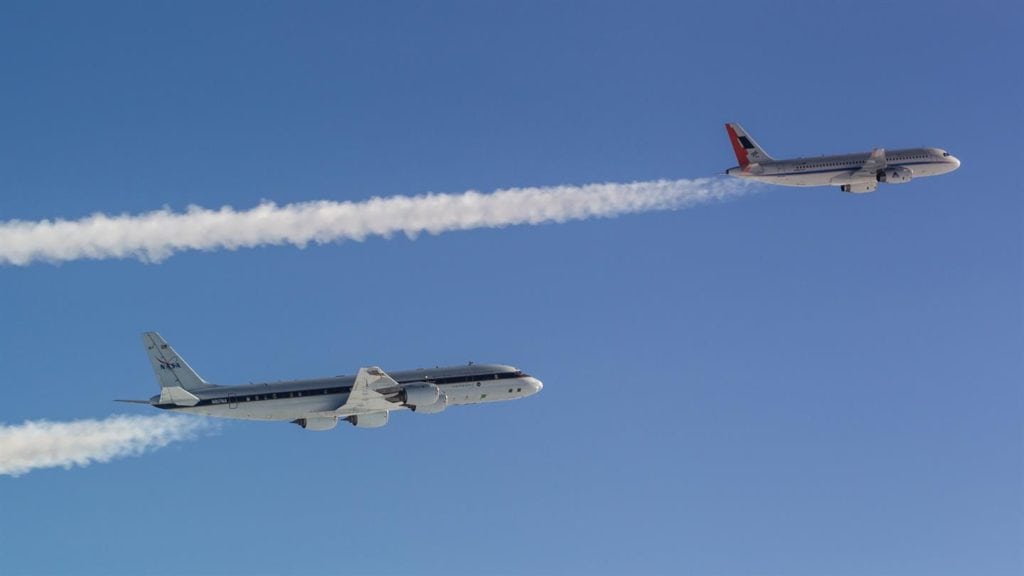
Photo courtesy of DLR
NASA and the German Aerospace Center (Deutsches Zentrum für Luft-und Raumfahrt [DLR], in German) have completed four out of eight joint research flights examining the possibility of more environmentally friendly aviation using alternative fuel blends.
The first joint test between the two organizations, in California in 2014, showed that adding 50% alternative fuel for cruising can reduce soot particle emissions by 50 to 70% compared to the combustion of pure kerosene. The current set of tests aims to determine what impact that has on the climate and emissions’ effect on warming. They also hope to see whether using a 30% biofuel blend has a similar effect as the 50% blend.
For the tests, DLR is flying a modified Airbus A320 which tests the fuel blend, while NASA supplies its DC-8 “flying laboratory,” which will trail the DLR craft with measurement tools to collect data on the emissions and the environment. The aircraft are taking off from the Ramstein Air Base in southwestern Germany, in part because the German winter provides favorable meteorological conditions for the test flights and measurements.
Testing is scheduled to finish Feb. 2, after 80 flight hours. No timeline has been released for the results, but researchers expect to have them in the next few months